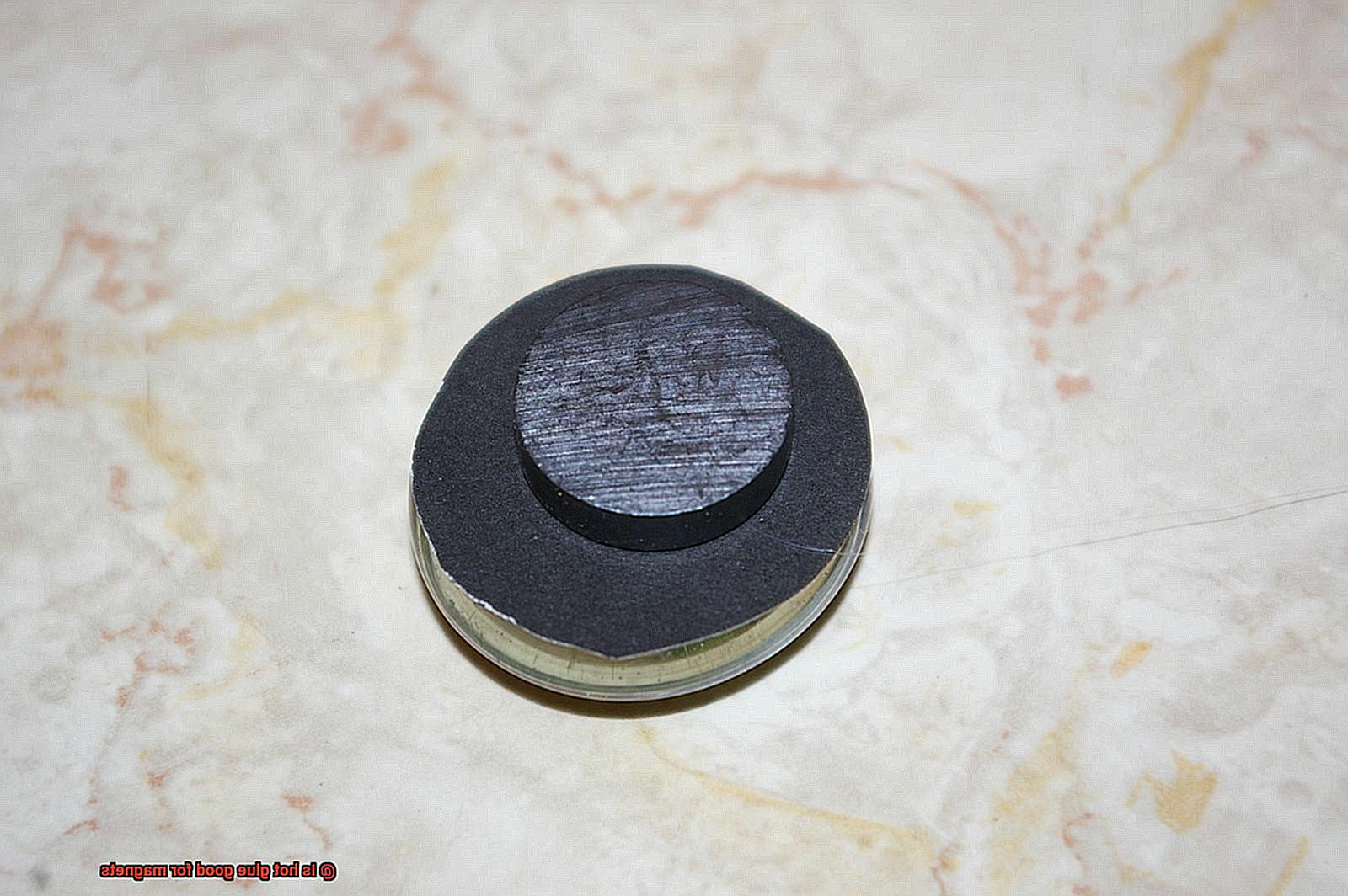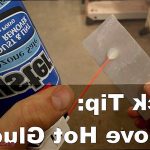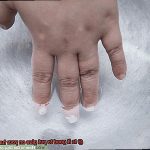Are you tired of magnets falling off surfaces or not sticking as well as you’d like? Look no further than hot glue. This versatile and convenient adhesive has become a staple in many DIY projects, but can it hold up against the forces of attraction between magnets?
In this blog post, we’ll explore the effectiveness of hot glue in securing magnets. Whether you’re working on a school science project or trying to create an eye-catching display for your home, choosing the right adhesive is crucial. We’ll compare hot glue to other common adhesives and provide tips to help you get the best results.
You’ll discover the strength of hot glue, its tolerance to heat and cold, as well as its affordability and availability. Plus, we’ll share some expert tips on how to use hot glue to optimize its potential. So if you want to ensure your magnets stay put, keep reading to find out if hot glue is the answer.
What is Hot Glue?
Contents
Hot glue, also known as hot melt adhesive, is a fascinating thermoplastic adhesive that is widely used in various industries and applications. It is composed of thermoplastic polymers, resins, and waxes that are melted in a glue gun and then applied to the desired surface.
One of the most significant advantages of hot glue is its fast bonding ability. It solidifies quickly upon cooling, making it a popular choice for bonding materials such as wood, plastic, fabric, and even metals. Its waterproof and heat-resistant properties make it suitable for use in outdoor and high-temperature applications.
There are several types of hot glue available in the market, each with its unique set of properties. Low-temperature hot glue is ideal for bonding delicate materials like foam or paper, while high-temperature hot glue is better suited for heavier materials such as metal or ceramics. Additionally, there are specialty hot glues designed for specific applications such as electronics or woodworking.
When using hot glue with magnets, it is essential to consider the type of magnet being used and the intended use. Ceramic magnets are more porous than neodymium magnets and may require a different adhesive. Furthermore, if the magnet is expected to be exposed to high temperatures or stress, hot glue might not be the best option as it could melt or weaken under pressure.
To ensure a successful bond without compromising the magnetic properties of the magnet, proper precautions need to be taken when using hot glue with magnets. It is crucial to ensure that the surface of the magnet and the object it is being attached to are clean and dry before applying the hot glue. Using a low-temperature hot glue gun to avoid damaging the magnet or causing it to lose its magnetic properties is also advisable. Applying the hot glue sparingly and allowing it to cool and solidify before handling the magnet will also help ensure a strong bond.
Types of Magnets
Magnets are fascinating objects that can be found in various sizes and shapes. They come in different types, each with its unique properties and applications. Let’s delve into the world of magnets and discover the different types.
Neodymium Magnets:
Neodymium magnets are the strongest type of magnet available commercially. These magnets are made from an alloy of neodymium, iron, and boron, which makes them highly resistant to demagnetization. They come in different shapes such as discs, blocks, and rings and are highly sought after for their strength. Neodymium magnets are commonly used in speakers, motors, and generators due to their magnetic properties.
Ceramic Magnets:
Ceramic magnets, also known as Ferrite magnets, are the most common type of magnet found in everyday products like refrigerator magnets and magnetic toys. These magnets are relatively inexpensive but have lower magnetic strength compared to other types of magnets. They are made from a combination of iron oxide and barium or strontium carbonate.
AlNiCo Magnets:
AlNiCo magnets are made from a combination of aluminum, nickel, and cobalt. They have high magnetic strength but are more brittle than other types of magnets. These magnets are commonly used in guitar pickups, sensors, and loudspeakers.
Samarium Cobalt Magnets:
Samarium Cobalt magnets are made from a combination of samarium and cobalt and are known for their high temperature resistance. They have a strong magnetic field and are commonly used in aerospace applications, robotics, and medical equipment.
When it comes to using hot glue with magnets, it’s essential to consider the type of magnet being used as not all types respond well to heat or adhesives. Permanent magnets like neodymium or samarium cobalt may lose their magnetic properties when exposed to high temperatures during the glueing process.
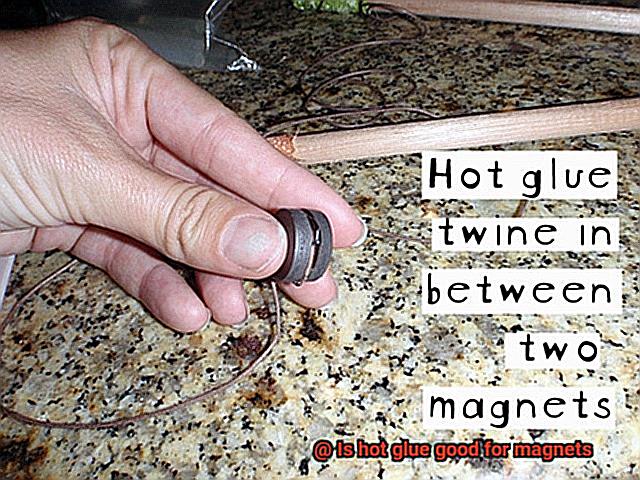
The compatibility of hot glue with different types of magnets depends on the strength of the magnet. Hot glue may work well with weaker temporary magnets such as those made of iron or nickel, but it may not be strong enough for permanent magnets like neodymium or samarium cobalt. In some cases, hot glue may even demagnetize permanent magnets due to the heat generated during the glueing process.
Understanding the different types of magnets is crucial when considering whether hot glue is a good option for securing magnets in place. It is recommended to use a low-temperature hot glue gun and ensure that the surface of the magnet and the object it is being attached to are clean and dry before applying the hot glue.
Factors to Consider When Choosing an Adhesive for Magnets
Magnets can be a powerful tool for any project, but choosing the right adhesive is essential to ensure their success. There are several factors to consider when selecting an adhesive for magnets, including the type of magnet, the surface it will be applied to, and the specific application requirements.
Strength is a critical factor to consider when selecting an adhesive for magnets. Since magnets can be quite heavy, you want an adhesive that can support their weight and maintain its hold over time. After all, no one wants their magnets to fall off mid-use. It’s essential to choose an adhesive that provides strong bonding without compromising the magnet’s integrity.
Temperature range is another significant factor to consider. If your magnet will be exposed to extreme temperatures, you need an adhesive that can withstand these conditions. For instance, if your magnet will be used in a high-temperature environment, you need a heat-resistant adhesive. Choosing an adhesive that can withstand the temperature range of your application will ensure that it stays in place and maintains its strength.
It’s also crucial to consider the surface that the magnet will be attached to. Some surfaces may require special preparation before applying the adhesive, such as cleaning or sanding. Choosing an adhesive that is appropriate for the specific surface will ensure a strong bond and prevent the magnet from falling off.
Lastly, specific application requirements must be considered when selecting an adhesive for magnets. Will your magnets be used in a high-vibration environment? Will they be exposed to moisture or chemicals? These factors can all impact the choice of adhesive and must be taken into account.
While hot glue may provide a strong hold for magnets in some cases, it may not always be appropriate. Hot glue may not withstand extreme temperatures or high-vibration environments, which could compromise their hold over time. Therefore, it’s essential to consider all factors before selecting an adhesive for your project.
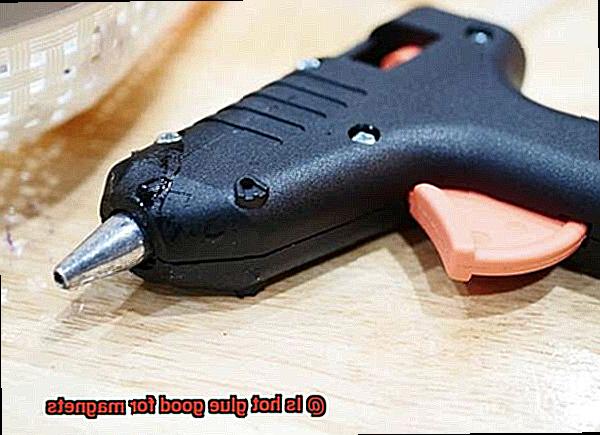
Pros and Cons of Using Hot Glue on Magnets
When it comes to DIY projects and home organization tasks, magnets are a versatile and useful tool. But choosing the right adhesive to attach magnets to various surfaces can be tricky. Hot glue is a popular choice due to its quick setting time and ease of use, but there are both pros and cons to using this adhesive.
Let’s talk about the pros first. One of the best things about hot glue is how quickly it sets. You can attach magnets to surfaces in mere seconds, making it an excellent option for projects that need to be completed quickly. Additionally, hot glue doesn’t require any special tools or equipment, so even beginners can use it with ease. And if applied correctly, it can create a strong bond between the magnet and surface.
However, hot glue also has its downsides. Firstly, it can be messy and challenging to clean up if you accidentally get it in the wrong place. This can be frustrating and time-consuming. Secondly, using hot glue at too high of a temperature can melt or damage the magnet, making it useless. Lastly, hot glue may not be strong enough for heavy-duty applications or in areas with extreme temperatures.
To determine whether hot glue is the right adhesive for your project, consider the specific task at hand. If you need something done quickly and don’t have access to other adhesives, then hot glue might be a good choice. However, if you’re working on something that requires a stronger bond or will be exposed to extreme temperatures, you may want to consider other options.
In conclusion, while hot glue may seem like an easy and quick solution for attaching magnets to surfaces, there are potential downsides to consider. It’s important to weigh the pros and cons before committing to this adhesive just like you would with any relationship. To help you make an informed decision, here’s a brief summary of the pros and cons of using hot glue on magnets:
Pros:
- Quick setting time
- Easy to use
- Can create a strong bond if applied correctly
How to Properly Use Hot Glue on Magnets
Attaching magnets to other objects can be tricky, but hot glue can be a highly effective adhesive if used correctly. Here’s how to properly use hot glue on magnets:
Clean the Surfaces – The first step in using hot glue on magnets is to ensure that both the magnet and the surface it will be attached to are clean and dry. Any dirt, dust, or oils on the magnet or the surface can weaken the bond between the glue and the magnet. A clean surface is critical for creating a strong bond.
Use a Small Amount of Glue – When applying hot glue, it’s important not to use too much. A small dot or line is usually sufficient for most applications. Excessive glue can create excess weight and cause the magnet to lose its strength. Use a low-temperature hot glue gun to avoid damaging the magnet or causing it to lose its magnetic properties.
Position Correctly – Once you’ve applied the hot glue, carefully place the magnet onto the surface where it will be attached. It’s essential to get it right on the first try since moving it around too much can weaken the bond created by the hot glue. Hold the magnet in place for a few seconds until the glue cools and hardens.
Apply One Magnet at a Time – If you need to attach multiple magnets, apply one at a time. This allows you to position each magnet precisely before gluing it in place, rather than trying to move multiple magnets into position at once. This approach ensures that each magnet has adequate contact with the surface and creates a strong bond.
Consider Other Adhesives – While hot glue can be an effective adhesive for magnets in certain circumstances, it’s essential to consider the type of magnet and intended use before deciding on an adhesive. For high-powered magnets or objects exposed to high heat or moisture, an epoxy or another type of adhesive specifically designed for strong magnets may be a better choice.
Common Mistakes When Using Hot Glue on Magnets
If you’re planning on using hot glue for your magnet project, it’s important to know the common mistakes that people make. As an expert on this topic, I’m here to help you avoid those pitfalls and create a strong, long-lasting bond.
The first mistake is not giving the glue enough time to dry. While hot glue dries relatively quickly, it still needs time to fully set and cure. Rushing to move onto the next step of your project can cause the glue to weaken and not hold the magnet in place properly. Take a deep breath and exercise patience – it will pay off in the end.
Another mistake is using too much glue. It may seem like more glue will make the bond stronger, but excess glue can actually cause small gaps in the bond. Hot glue can expand as it cools, which can push against the magnet and weaken the bond. Use a small amount of glue and resist the urge to go overboard.
Using the wrong type of hot glue can also be a mistake. Not all hot glues are created equal, and some may not work well with magnets. Choose a high-quality hot glue that is specifically designed for use with magnets to ensure a strong bond.
Lastly, failing to properly prepare the surface before applying the hot glue can lead to problems down the line. Make sure the surface is clean and dry before applying any glue. Dirt or moisture on the surface can interfere with the bond and weaken it over time.
Alternatives to Hot Glue for Attaching Magnets
While hot glue is a popular choice due to its quick drying time and strong hold, there are other options that can provide just as much strength and longevity. Let’s explore some of the alternatives you can consider:
- Two-part epoxy: This adhesive creates an incredibly robust bond between the magnet and the surface it’s attached to. Although it takes longer to dry than hot glue, it provides a more long-lasting hold that can withstand wear and tear. If you need a super-strong bond, this is the option for you.
- Double-sided adhesive tape: This tape is easy to use and is a great option for lightweight magnets. However, it might not be suitable for larger or heavier magnets. If you’re looking for a fuss-free option for small or medium-sized magnets, this could be the one for you.
- Hardware screws and nuts: A more traditional approach to attaching magnets is to use hardware screws and nuts. This method requires more effort and time, but it provides a secure hold for larger or heavier magnets. If you want a classic solution that’s guaranteed to hold up over time, this could be your best bet.
- Silicone adhesive: For those who need to attach magnets outdoors or to irregular surfaces, silicone adhesive can be a great option. It’s weather-resistant and can provide a strong hold even in challenging conditions. If you need an adhesive that can handle tough environments, this one is worth considering.
It’s important to remember that each option has its own strengths and weaknesses. When choosing an alternative adhesive for attaching magnets, think about your specific needs and preferences. Take your time and choose the one that works best for you.
Conclusion
To sum up, hot glue can be an excellent adhesive for keeping magnets in place, but only if it’s used correctly. Before settling on an adhesive, it’s essential to take into account the type of magnet and how it will be used. While hot glue has its perks, like its fast bonding time and user-friendliness, it also has some drawbacks. For instance, it doesn’t perform well in extreme temperatures or high-vibration environments.
It’s crucial to prepare the surfaces thoroughly before applying hot glue and use a low-temperature hot glue gun to avoid damaging the magnet or compromising its magnetic properties. Moreover, using too much glue can weaken rather than strengthen the bond.
If you’re looking for other ways to attach magnets besides hot glue, there are several options available. These include two-part epoxy, double-sided adhesive tape, hardware screws and nuts, and silicone adhesive. Each option has its own advantages and disadvantages that should be weighed based on your specific needs.
In conclusion, selecting the right adhesive is critical when working with magnets to ensure they stay put and maintain their strength over time.

